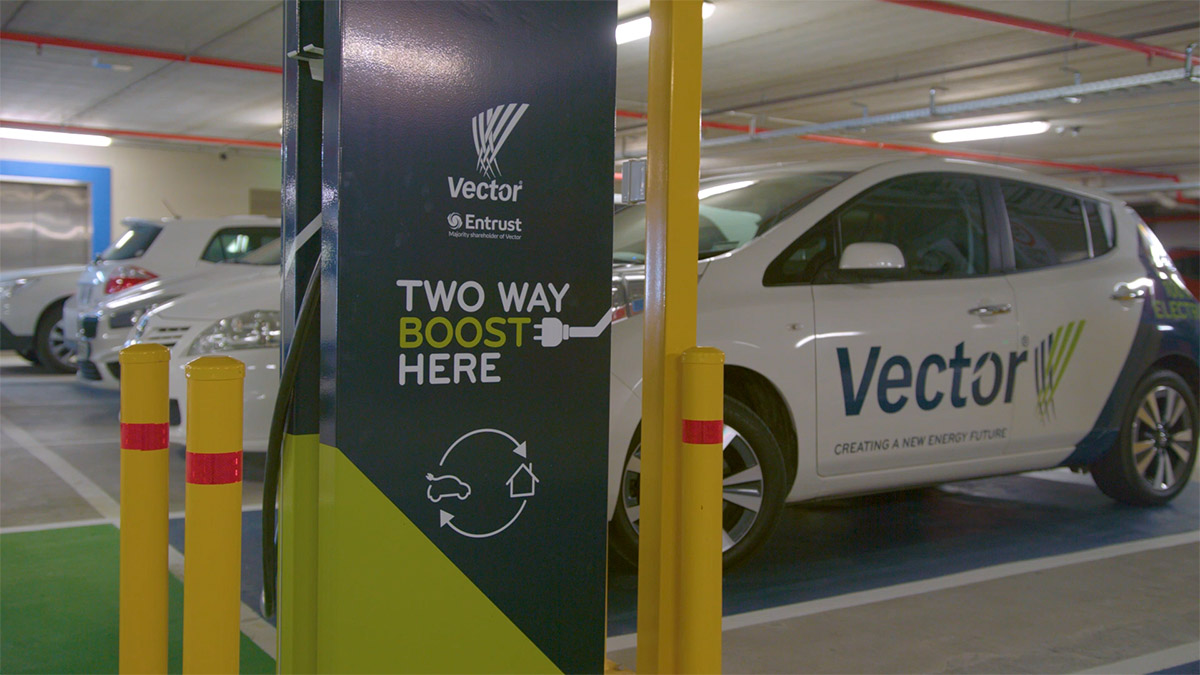We’re rethinking the whole concept of how consumers access the power they need, and in doing so we’re bringing electricity to New Zealanders in ways that redefine current infrastructure.
We have deployed sixteen 50kW rapid electric vehicle chargers to provide fast and effective power to Auckland’s growing fleet of electric vehicles. As we did so, we recognised there was a wider issue we would need to solve. When electric vehicle usage increases, it will only be a question of time before repowering them puts pressure on the current grid. More electric vehicles being charged at peak time could lead to a greater need for more infrastructure to meet that peak.
Charging becomes two-way
Our next iteration of electric vehicle chargers helps resolve that issue by time-shifting when people will charge their vehicles. Our new vehicle-to-grid (V2G) chargers operate in two ways. In another first in New Zealand, not only can they take power from the grid, they can also reverse the process; putting power back in ways that have the potential to transform electric vehicles into mobile power sources for businesses and homes. A Nissan Leaf G2 for example with a 30kWh battery could power the average household for 10 hours.

If you think you don’t get that much use out of your car given what it costs, you’re right. The average vehicle is parked for the majority of the time. But the new V2G chargers transform what we will soon mean by vehicle usage. Charging vehicles when they are idle during daylight hours will enable electric vehicles to act as an additional rechargeable energy source. Connected to a V2G charger, the vehicle itself could be used to introduce extra power to buildings, as a cheaper power source during peak-hour consumption, as a way to power homes during power outages, and even to release energy back to the grid to support customer demand.
And of course the new chargers could, in time, integrate with other technologies such as solar and batteries to redefine what we mean by a truly smart energy home or business.
V2G is proof of how quickly innovation cycles are condensing in the energy sector and elsewhere. Such change is not without its challenges. At this stage, in our view, only two vehicle models, the Nissan Leaf and Mitsubishi Outlander, can be used with the new V2G chargers. It’s also important that the Australia/ New Zealand standards for how residential batteries can be housed is worked through, because otherwise there’s a risk that electric vehicles will not be able to be plugged into customers’ garages.
We are confident that take-up will increase as manufacturers see no adverse impact on their batteries. The University of Warwick in the United Kingdom undertook research on the potential of V2G, and found that it could improve vehicle battery life by around 10% over a year.